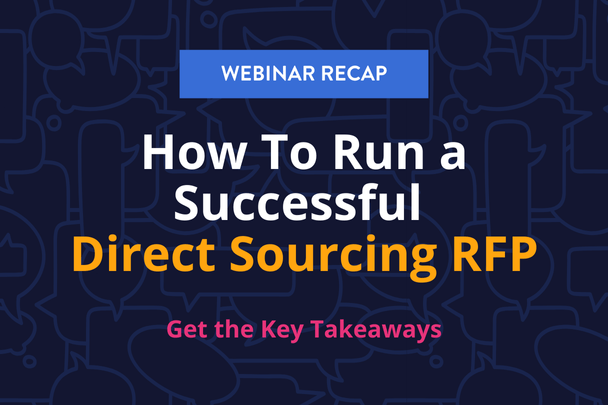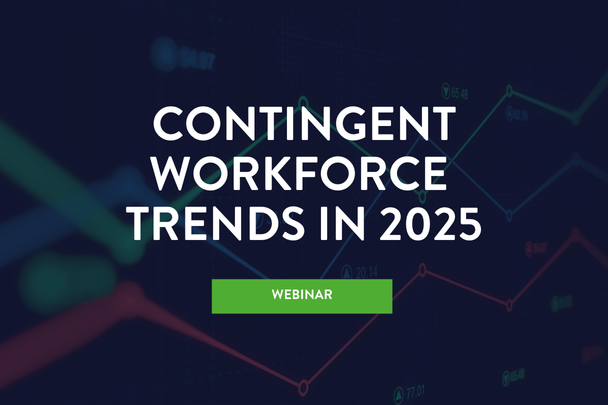Stepping into these first few weeks of 2023, it remains evident that the post-Covid world of work will continue to face unique challenges. From economic uncertainty to the sustained growth of the contingent workforce, it’s critical that employers look ahead and prepare as best they can for what’s to come. Consider these top five contingent workforce trends that will shape the landscape in 2023.
1. Uncertainty will stay with us in 2023.
After the last 3 years of twists and turns, what the new normal will look like continues to be anybody’s guess. For contingent labor programs, that’s both a good and a bad thing.
On the bright side, executive leadership is starting to take notice of the strategic benefit of this flexible workforce and programs will be more likely to get the attention they deserve, dare I say the funding they deserve. Many HR departments are already taking a more holistic approach to their workforce and looking at contingents as part of that and this trend will continue.
The goal of the ever elusive “total talent management” will get closer to the finish line. On the downside, when the usage of contingent workers increases, contingent programs need to be able to not only scale but address the different ways in which contingent workers are sourced and managed.
With a record number of people filing to the be their own business, options for outsourced engagements and those silver medalists hiding in your ATS, the workstreams for contingent programs will continue to expand. Now is also a great time to ask yourself if your VMS or other Saas system can support the scale. If not, 2023 is a great time for a tech demo! (Advice here: How To Get the Most Out Of a Tech Demo)
Let’s not forget about compliance. Pay transparency laws and definitions of what makes someone an independent consultant can be tricky to stay up to date on but need to be addressed. This isn’t going away anytime soon. In fact, we are likely to see more states/cities adopting different laws around worker classification and compliance. Aside from knowing in what ways contingent workers want to be engaged, programs will begin to really dig into the “how” they should be engaged for compliance reasons.
2. An omnichannel extended workforce approach will be a key to success.
Contingent workers are not just “temps” anymore and there isn’t one way to set up a program to engage and manage them. How do you tap into all these potential pools of candidates and stay ahead of contingent workforce trends?
Considerations include bringing on an MSP (Managed Service Provider), setting up a direct sourcing program, centrally managing your Freelancers, designing an Early Talent program, or bringing professional services into a managed program. Successful contingent programs will explore, implement, and leverage these different ways to engage talent. Innovation will be a key factor to success and those programs who embrace it will see their companies become more competitive in the talent market.
One strategy in particular, direct sourcing, will continue to gain traction. In a recent webinar, Staffing Industry Analysts reports that 35% of contingent buyers have a direct sourcing program in place, making up 3% of their spend. In just two years, this is predicted to be at almost 85% with 10% of the spend coming from the direct sourcing channel. This method of talent attraction is building momentum and not stopping any time soon.
3. A holistic approach to workforce management through integrated technologies will be a differentiator.
Great digital experiences are becoming table stakes and buyer expectations continue to rise. A full req to check process in a vendor management system, or VMS, has been around for many years and should be the foundation for any of these systems.
Basic integrations from a VMS into an AP system or an HRIS should also be expected. But what’s exciting about where this space is going is the continued evolution from a simple “manage your vendors” approach to a more holistic extended workforce management strategy.
Growth of artificial intelligence and machine learning, along with the ability to support pay transparency laws and diversity initiatives, paired with slick features such as embedded analytics have continued to change the way buyers are able to manage their contingent programs. With these developments, coupled with acquisitions and some new players, 2023 will see the continuation of improved functionality in these tools, that are helping to move us closer to total talent management.
More mature programs leverage integrated systems beyond just VMS, including ATS, CRM or FMS (also known as the Alphabet Soup of HR Technology). 2023 will see expanded use of tech along with great new features within the tech products themselves and if we all had 1 wish, it would be for these tools to be seamlessly integrated into one platform. Maybe 2024.
4. Experience matters more now than ever.
I’ll say it again, experience WILL continue to matter. Giving that “wow” experience at every touch point will continue to be top of mind for all parties involved. Whether we are talking about the process for your contingents being submitted and interviewed at your company by an agency, your freelancers going through your vetting and contracting process, or your hiring manager using your VMS, experience will continue to be a top priority.
Why? As mentioned before, contingent workforce trends show expectations are rising, and the talent market will continue to be competitive. A 2021 survey by Glassdoor found 85% of job seekers look at the company’s review and ratings before deciding where to apply for a job. I’d venture to say that number was higher in 2022 and will continue to rise in 2023.
An SIA webinar recently noted that Surveys have shown that while pay will always be important, workers will consider less pay to work at an organization that offers flexibility, empathy, and inclusion.
When it comes to the tech experience, the old adage “you never get a second change to make a first impression” definitely applies here (no pun intended!). This includes a company’s mobile presence and yes, I am looking at you staffing agencies, tech providers AND buyers!
According to Recruiting Daily, almost 70% of job applications in 2021 were made from mobile devices. In our current market, job seekers will expect to be able to apply, communicate, onboard, and manage their time/pay all on a mobile device. In 2023 and beyond, mobile friendly will be key.
5. Growth of “contingent” as a percentage of the overall workforce will continue to increase.
Last year, several sources cited 40% as the percentage of contingent workers in the labor force. Hard to believe that less than 20 years ago that percentage was under 10%. Many predictions have that number going up to 50% and beyond as we move later into this decade.
With the Great Resignation, Great Reshuffle, Great Resettling and many more ways to describe a fundamental change in the way in which workers feel, search for and leave jobs, combined with that uncertainty we talked about earlier, contingent work is not only here to stay, but contingent workforce trends show we will see its expansion and evolution as we move through 2023 and beyond.








